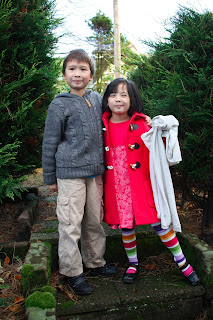I have never been big on buying different cuts of meat. In the US, my typical monthly dinner rotation includes ground beef/turkey, chicken thighs/drumsticks, pork chops, meat for stir fry, seafood (fish, shrimp, scallops). If I feel adventurous, I buy flank steak. John will buy and try anything.
Since moving to the UK, I have become more tempted to buy meat and different varieties of it (lamb chops, sirloin steaks, pork in various forms, whole chicken). Having more time helps, but a lot of this is driven by the presentation of the meat. I often just see something and think, that looks good. I wonder how to make that? I'll buy it and figure it out later.
 |
UK packaging (above) and
US packaging (below) |
First, UK meat packaging seems far more appealing and appetizing to me than US meat packaging. I'm used to seeing meat shrink wrapped onto foam trays or squished into vacuum packaging. It looks mass produced and industrial to me. It doesn't look like someone has "cared for" the meat or lovingly carved it for me. In the UK, meat is usually in a deep plastic tray so you can actually
see it--it's shape, texture, cut--for what it is. When you see 6 lamb chops nicely fanned out like they are behind a butcher shop counter, it is very tempting. Distribution is much tighter here (much smaller country) so perhaps stores can afford to allow more air in the packaging?
Second, the meat section is more naturally a part of the grocery shopping experience. American grocery stores often relegate meat to the back of the store, because the butchers prepare it in the back room and place it in refrigerated compartments as it's prepared. In Britain, meat is in a standard refrigerated aisle, flanked by an aisle of refrigerated prepared foods like lasagne, tapas, pizzas on one side, and an aisle of dairy products on the other. You are going to pass the meat aisle on the way to get yogurt, cheese and milk, so might as well have a look at the meat. (As a side note, I have never seen more yogurt and cheese varieties in the US).
Third, meat is displayed on shelves at eye level rather than in bins at hip level. You don't have to look down to find the meat. It is at eye level, practically shouting out "See me! Buy me!" You can't avoid seeing meat, even if you walk right past the aisle. If you are lured in, you see lots of choices propped up, from hip level to above eye level. It is everywhere.
Fourth, the shelves are angled so the meat appears more upright. It seems more "awake", while in the US, meat is lying flat and "asleep" in bins. The former seems more fresh and shall we say perky? Perhaps Clotaire Rapaille would agree. (He studies culture codes--e.g., cheese in America is dead and cheese in France is alive.)
Finally, I think meat is also more appealing because it is part of everyday life, not viewed as mass produced (even if it is). Having a local butcher reminds me that meat comes from a farm and is often carved by a person. And he's a nice person who waves.












































